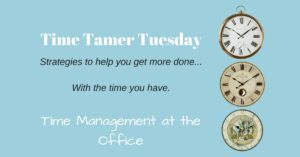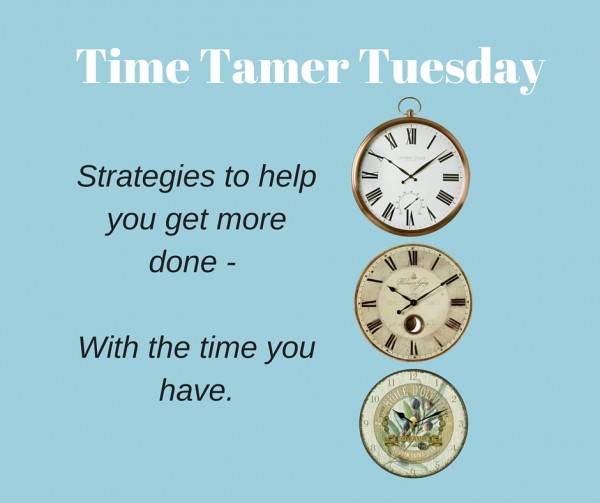 Time management is likely the number two complaint of my clients, right behind clutter. The reality is, we don’t manage time we manage tasks and ourselves.
Time management is likely the number two complaint of my clients, right behind clutter. The reality is, we don’t manage time we manage tasks and ourselves.
Time Explained
We all have exactly the same amount of time. Time ticks by at exactly the same speed for everyone. Each second, minute, hour and day goes past the same for both you and I. While it might seem like some days fly by, time ticks along at the same pace regardless of our age, stage or needs.
The Uber Productive
So how is it then that some people just seem to manage time so much better than the rest of us? They get stuff done, accomplish goals and they seem unstoppable.
The answer is that these people have learned to manage tasks really, really well.
Manage Tasks, Not Time
Do yourself a favour; stop trying to manage time. Time is out of your control and can’t be managed. Tasks can be managed and that you mostly have control over. Try these tips to get you jump started on managing your tasks. Then sit back and enjoy your accomplishments and goals become reality.
- Write down all the things you think you should be doing. Writing things down makes them tangible and more realistic. Always start the task with a verb when you write them down. The verb tells your brain that action is required and what action to take.
- Next, identify the top 3 items that will move your goals forward faster than anything else.
- Create a task list for your day with only these three items on the list, listed by priority. Not sure what priority to place them in? Ask yourself, if only one task was accomplished today, which one does it have to be to move your life, business, career, family or project forward?
- Book the first task into your day. If there isn’t time booked, the day will eventually slip away without those most important tasks getting accomplished.
- If the task doesn’t fit, break it down. Make sure each part of the task is small enough that you are guaranteed to be successful with the time that you have.
- Keep working on the task until it is finished. Have to move on to another commitment? Take that unfinished task and put it top of your list for tomorrow, before any other task gets on your to do list for tomorrow.
Use these to help you manage your tasks. Meanwhile, look like a pro at time management.















